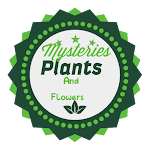1. Sun-Kissed Chemistry: St. John's wort's vibrant yellow flowers aren't just pretty; they contain a treasure trove of chemical compounds called hyperforins. These hyperforins are believed to be the key players behind the plant's potential mood-balancing effects.
2. A Medieval Medicine Chest Staple: Travel back in time to medieval Europe, and you'd likely find St. John's wort in many a healer's garden. Historical texts document its use for a variety of ailments, including wound healing, burns, and even nerve pain. While modern science hasn't fully validated all these uses, it highlights the long history of this plant in traditional medicine.
3. Friend or Foe in the Garden?: St. John's wort, the sunshine-loving charmer, can have a double-edged sword effect in the garden. While it attracts pollinators and adds a splash of color, some invasive species look remarkably similar. Careful identification and responsible cultivation are crucial to avoid disrupting native plant communities.
4. A Sun Salutation... with Sunscreen: If you're using St. John's wort, be prepared to embrace the sun... with caution! This herb can increase sun sensitivity. So, slather on that sunscreen and enjoy the outdoors responsibly.
5. More Than Meets the Eye: Perforatum's Secret: St. John's wort's scientific name, Hypericum perforatum, holds a hidden message. "Perforatum" translates to "pierced with holes." Take a closer look at the leaves, and you'll see tiny oil glands dotting the surface. These glands might be the inspiration for this part of the name.
6. From Feast Day to Folk Remedy: The name "St. John's wort" is a fascinating blend of history and herbal lore. It likely references Saint John the Baptist, whose feast day falls around the plant's peak flowering time. Back then, people often associated herbs with specific holidays or saints, and the connection stuck.
7. A Global Citizen with Local Roots: St. John's wort may be found spreading its sunny cheer across continents today, but its roots trace back to Europe and western Asia. Over time, it's become naturalized in many parts of the world, adapting to diverse environments.
8. The Power of Partnerships: St. John's wort isn't a solitary player in the ecosystem. Its vibrant blooms attract a variety of pollinators, like bees and butterflies. These tiny creatures play a crucial role in plant reproduction and maintaining healthy ecosystems. By attracting pollinators, St. John's wort contributes to a thriving ecological dance.
9. The Science of Sunshine: Research on St. John's wort continues to unfold. Scientists are exploring its potential benefits for mood disorders and other conditions, while also investigating its potential interactions with medications.
10. Nature's Apothecary, Responsibly Accessed: St. John's wort serves as a reminder of the potential for natural remedies to support well-being. However, it's crucial to remember that it's not a one-size-fits-all solution. Always consult a healthcare professional before using St. John's wort, especially if taking other medications.





